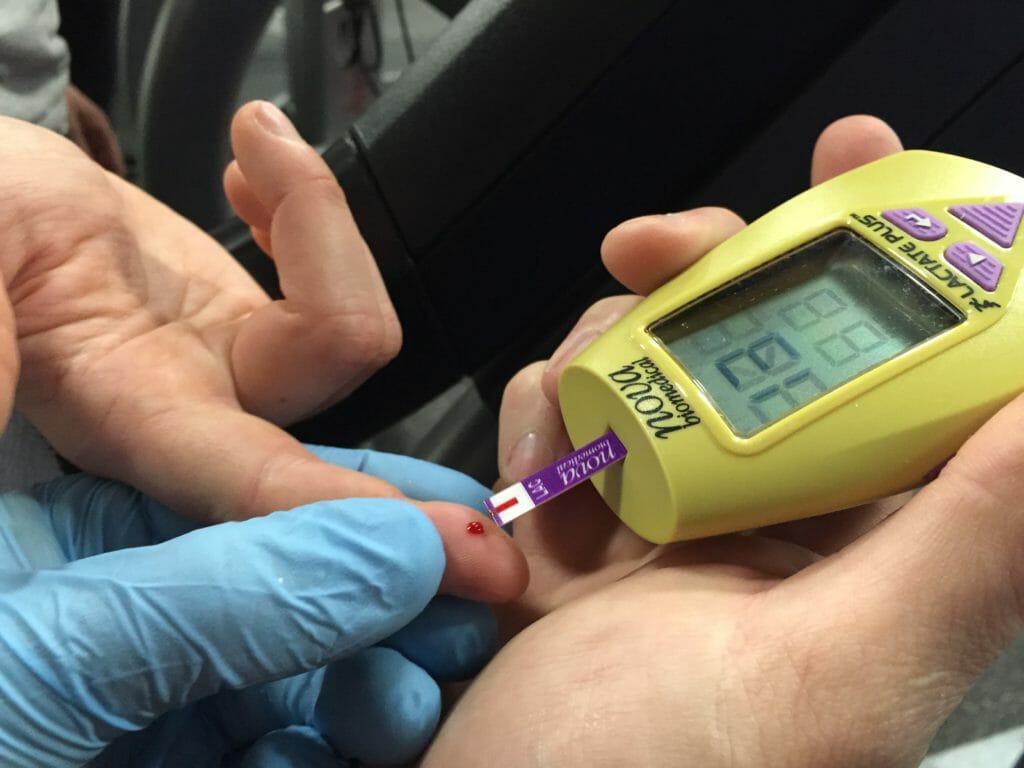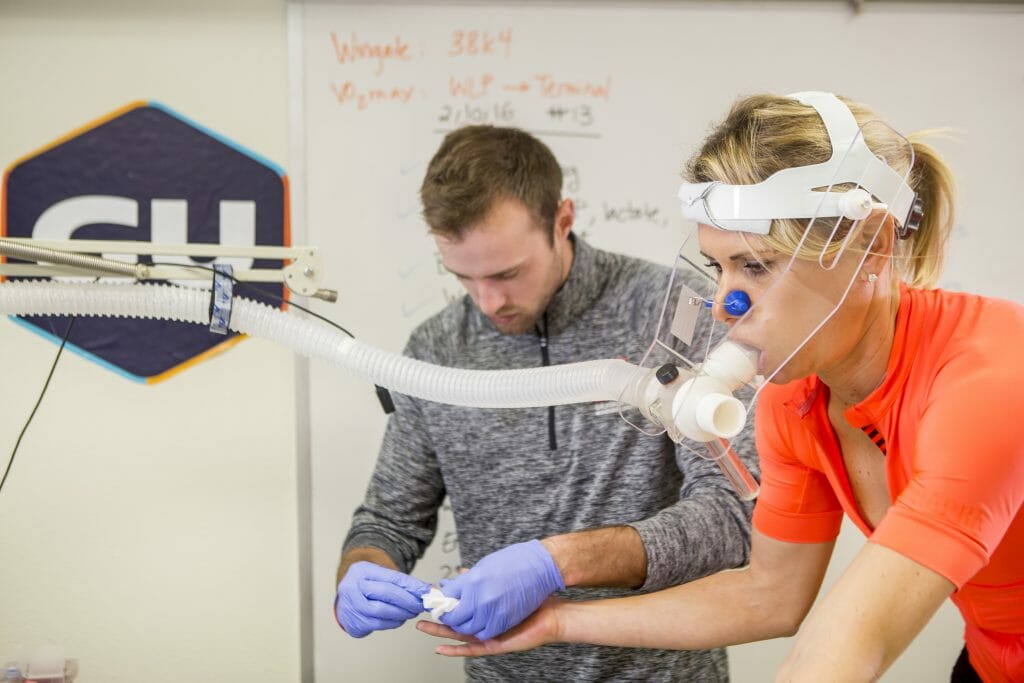Lactate: From Villain to Vital Player
Lactate has long suffered from a bad reputation in the world of sports science. Historically, it was labeled a “waste product” of anaerobic metabolism, blamed for muscle fatigue and poor performance. The term “lactic acid” conjured images of burning muscles and the dreaded “wall” during marathons.
But science has been steadily rewriting lactate’s story. George Brooks’ work on the “lactate shuttle” concept demonstrated that lactate is not a dead-end byproduct but a critical energy substrate. It’s produced in one cell or tissue and utilized as fuel in another. The new paper on the mLOC goes even further, showing that lactate is not just an intermediate player but the star of the show when it comes to carbohydrate oxidation.
Here’s the key finding: while pyruvate is a known intermediate of glycolysis, it’s lactate—transported into the mitochondria by monocarboxylate transporters (MCTs)—that primarily drives mitochondrial oxidation. Once inside, lactate is converted back into pyruvate by mitochondrial lactate dehydrogenase (mLDH) and then fed into the tricarboxylic acid (TCA) cycle for ATP production. This pathway is efficient, robust, and is the foundation of endurance performance.
The Mitochondrial Lactate Oxidation Complex (mLOC)
The mLOC is a specialized system within the mitochondria that facilitates the oxidation of lactate. Its components include:
- Mitochondrial Lactate Dehydrogenase (mLDH): Converts lactate to pyruvate inside the mitochondria.
- Monocarboxylate Transporters (MCT1 and MCT4): Transport lactate across cellular and mitochondrial membranes.
- Basigin (CD147): A chaperone protein that stabilizes MCTs.
- Mitochondrial Pyruvate Carriers (mPC1 and mPC2): Handle pyruvate within the mitochondrial matrix.
This elegant system highlights the mitochondria’s ability to directly oxidize lactate, bypassing the need for cytosolic conversion to pyruvate. It also underscores the body’s reliance on lactate as a primary fuel source during sustained exercise.
Why Brooks believes that Lactate Matters More Than Pyruvate in Endurance Performance
Lactate Availability During Exercise
- During moderate- to high-intensity exercise, the lactate-to-pyruvate (L/P) ratio in the blood can exceed 500:1. This dominance of lactate is central to Brooks et al’s assertion that lactate must play a central role as an energy substrate. This is the core observation.
- The body’s reliance on lactate actually ensures a steady supply of fuel for working muscles, especially during prolonged efforts.
Efficient Energy Transfer
- Lactate’s ability to shuttle between glycolytic (producing) and oxidative (consuming) tissues optimizes energy transfer.
- This “lactate shuttle” allows glycolytic fibers to offload excess lactate to oxidative fibers or muscles like the heart, where it’s used as fuel.
Redox Balance
- The conversion of pyruvate to lactate in glycolysis regenerates NAD+, an essential cofactor for continued glycolytic activity.
- By transporting lactate to the mitochondria for oxidation, the mLOC helps maintain cellular redox balance during sustained exercise. This is another key observation made by Brooks et al.
High-Capacity System
- Lactate transport and oxidation systems are highly scalable, accommodating the increased metabolic demands of endurance activities.
- In contrast, pyruvate’s transport and handling are more limited, making lactate the more practical and efficient substrate.
- Though it is not directly addressed in this article, this does not appear to take anything away from the observations that pyruvate transitions from glycolysis to the Krebs cycle and is ultimately recycled into usable fuel (ATP) in aerobic metabolism.
Implications for Endurance Sport and Training
Fasted Training Is No Longer Recommended
While we as a coaching team transitioned away from the blanket prescription of fasted training for virtually all athletes, these findings further that conclusion that fasted training not be practiced in most athletes. We will discuss periodizing nutrition in the future but periodizing nutrition and training the gut to handle more carbohydrate during exercise are not related to fasted training.
To review, Uphill Athlete historically used to promote fasted training under the now-disproven idea that it increases an athlete’s rate of fat oxidation as well as metabolic flexibility. We now know that while these results may prove true for some, it comes at a high cost: reduced carbohydrate availability, lower lactate production, and the final piece of the puzzle… under-stimulation of the mLOC. The absence of sufficient lactate limits the engagement of critical mitochondrial pathways, potentially impairing adaptations related to carbohydrate oxidation. The takeaway is that Uphill Athlete no longer recommends long bouts of fasted training. Instead, athletes should fuel appropriately to maximize lactate production and utilization during sessions.
High-Intensity Training (HIT): Unlocking Lactate’s Potential
High-intensity intervals increase lactate production, stimulating the mLOC and enhancing mitochondrial capacity. This highlights their importance. And students of our methods will know that the timing—or periodization—of this training is important. Incorporating HIT sessions can improve the efficiency of lactate transport and oxidation, a critical adaptation for endurance performance. A typical example workout is to train at 90-110% of lactate threshold to maximize lactate utilization.
The Role of Glycogen
Muscle glycogen is the primary source of carbohydrate during prolonged exercise. Glycogen breakdown produces lactate, ensuring a steady supply of substrate for the mLOC. Depleted glycogen stores, as seen in “bonking,” impair lactate production and energy supply. The takeaway here is that it is important to avoid chronic glycogen depletion. At the risk of sounding repetitive, ensuring adequate carbohydrate intake supports training and recovery.
Recovery and Adaptation
Post-exercise recovery relies heavily on lactate oxidation. After intense sessions, lactate serves as a key fuel for mitochondrial regeneration of ATP. Training that enhances mLOC function accelerates recovery by optimizing lactate clearance and utilization. Again, this means that, as we have always advocated, post-training carbohydrate intake is critical.
Monitoring Lactate Dynamics
Measuring blood lactate levels during exercise can provide valuable insights into an athlete’s metabolic efficiency and mLOC function. Lactate threshold testing remains one of the best tools for setting training zones and monitoring progress. However, as a rule of thumb, for this to be worth undergoing, your resting lactate needs to be below 1.0.

Refining Training Strategies
Understanding that lactate, not pyruvate, is the primary carbohydrate substrate for mitochondrial oxidation calls for a paradigm shift in endurance training. Here’s how to apply this knowledge:
- Build the Base. You must be fit enough to train. And none of the suggestions that follow will work without a good base of aerobic fitness. If you have anything less than 24 weeks of consistent aerobic exercise, you’d need to undertake a good aerobic base building training plan before applying any of the following strategies.
- Train Your Lactate System. Include sessions that elevate lactate levels, such as tempo runs, threshold intervals, and hill repeats at 90-110% of lactate threshold.
- Fuel Strategically. Ensure adequate carbohydrate availability before and during training to support lactate production during training.
- Prioritize Recovery. Incorporate low-intensity aerobic sessions to enhance mitochondrial efficiency and lactate clearance.
- Educate your fellow athletes. Shift the narrative around lactate, emphasizing its role as a fuel, not a waste product.
The Bigger Picture
The revelation that lactate is the primary form in which carbohydrates enter the mitochondria for oxidation is more than an academic curiosity. It’s a practical insight with important implications for how we train, fuel, and recover as endurance athletes. By embracing lactate’s central role, we can refine our methods and embrace two pillars of the Uphill Athlete methodology: Zone 2 training and adequate fueling of our training. For those of us who live to climb, run, and explore the mountains, lactate’s story is not one of limitation but of possibility—a potent reminder that endurance is not just about how far we go but how efficiently we move. Let’s use this knowledge to train smarter, adapt better, and climb higher than ever before.
Further Reading:
- If you want to learn more about how your body processes lactase, and why a sufficient aerobic base is so important for endurance, read Clogging Up the Drain: Why You Are Forced to Slow Down.
- Take a deep dive into the role of mitochondria and lactate in The Science and Physiology of Endurance Training.
- Read more about lactate testing and our tips and tricks.
This article is informed by findings in “The Mitochondrial Lactate Oxidation Complex: Endpoint for Carbohydrate Carbon Disposal,” authored by Robert G. Leija, Jose A. Arevalo, Dianna Xing, José Pablo Vázquez-Medina, and George A. Brooks, published in AJP Endocrinology and Metabolism (2024).

